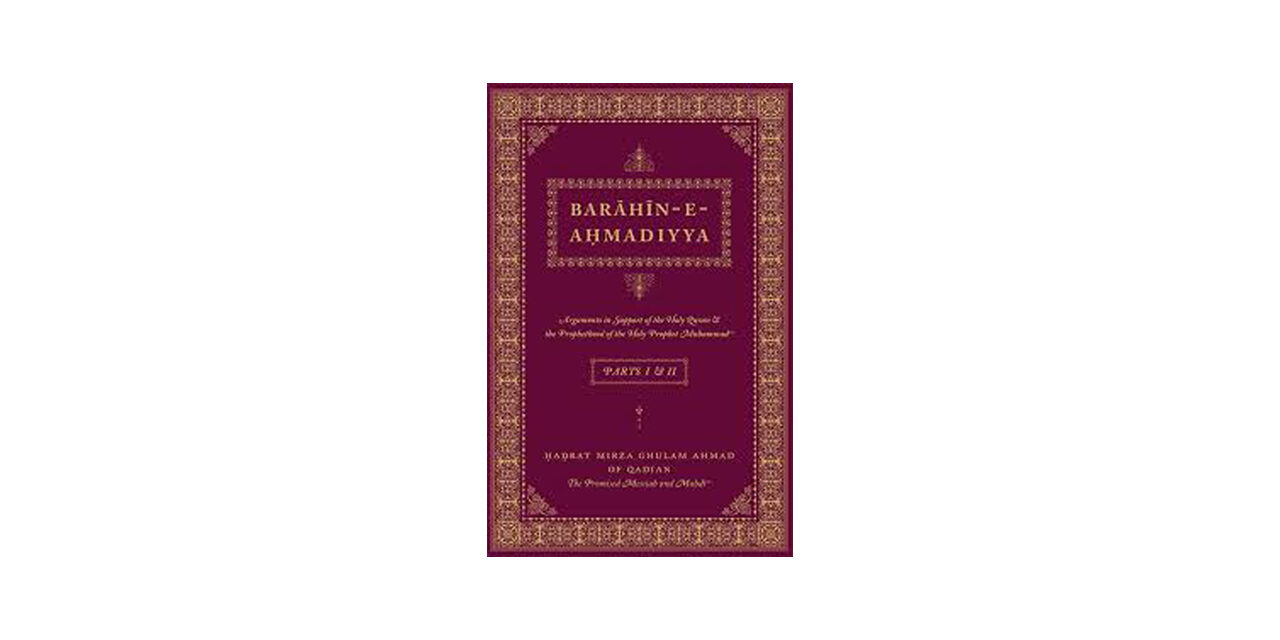Braheen-e-Ahmadiyya holds a significant status for the followers of Mirza Ghulam Qadiani, and why would it not? After all, it was the first-ever text written by their “Promised Messiah”. Well, the credibility of this book holds the same status as the credibility of Mirza’s prophethood.
Mirza Ghulam declared this book to be a triumph and asserted it to hold 300 infallible arguments in support of Islam. According to him:
“I have compiled this book after seeing a hundred kinds of wrongdoings and mischief and this book consists of three hundred strong rational reasons to make the truth of Islam brighter than the reality of the sun.”
(Roohani Khazain, vol. 1, p. 62)
Later, in Majmua-e-Istiharat (p.11-2) he claimed this book to consist of 150 parts. But when the book got actually printed, even Mirza had to admit that the four volumes barely made up 36 parts (Majmua-e-Ishtiharat p. 402).
Mirza Sahib claimed that the book would consist of fifty volumes. People were amazed that he only wrote four-and-a-half volumes in 25 years. How would he ever be able to complete the remaining 45 volumes? But Mirza already had a plan B up his sleeve. When asked about the remaining part of the book, Mirza Qadiani invented a law of arithmetic and mathematics that should have earned him a Nobel Prize:
“At first I intended to write fifty, but then I was content with five instead of fifty because there is only one point difference (only a difference of zero) between the numbers fifty and five, hence that promise (of fifty) was fulfilled by five.”
(Roohani Khazain, vol. 21, p. 9)
This theory of Mirza left even his followers dumbfounded, but being helpless they are still justifying this preposterous statement of their “Prophet”.
Well, the “so-called” fifth volume also got published in a very interesting or rather ridiculous way.
He wrote four volumes of his book in 1884. Then in 1905, after a lapse of 20 years, Mirza Qadiani showed another marvel by writing a book called Nusrat-ul-Haq. When he had written 72 pages of this book, it suddenly occurred to him that from page 73 onwards, the book will miraculously turn into Baraheen-e-Ahmadia, volume 5. Even today’s editions of Roohani Khazain, volume 21, contain this marvel. Up to page 72, the book is called “Nusrat-ul-Haq”, and from page 73, it suddenly says: “Baraheen-e-Ahmadiyya Part V”. From p. 411 onwards, the title of the book is: “Khatma-e-Nusrat-ul-Haq”.
Anyone would doubt the mental state of an author who does not even have a clue about the title of the book he is writing. We are not judging anyone here. We are just talking about facts.
It is not only the title of the book which was uncertain. Rather, Mirza and his son were both in a state of doubt about the page count as well.
Mirza Bashir Ahmad M.A. said:
“The Promised Messiah published a proclamation in 1879 about the Baraheen, according to which, by the time he would have written the Baraheen-e-Ahmadiyya and the volume of the book would have reached about two and a half thousand pages, he would have mentioned three hundred infallible arguments for the veracity of Islam.”
He writes further:
“Out of those three hundred arguments he committed to writing, however, only one argument has been mentioned in the published Baraheen-e-Ahmadiyya and that too in an incomplete way.”
(Sirat-ul-Mahdi, Part I, pp. 99-100)
In other words, even his own son admits that there is no argument at all.
Now let us have a look at the total number of pages this masterpiece contains. The fifth volume, Nusrat-ul-Haq, part V of Baraheen-e-Ahmadiyya has a total of 428 pages. The first four volumes have a total of 673 pages, thus adding up to 1101 pages… which is not even close to 2500 pages!!
But then perhaps those 1101 pages are the “Zill” of 2500 pages and that one incomplete argument is the “Barooz” of 300 arguments?
This book is a complete reflection of Mirza’s own personality. When you look at the book, there is no doubt that the first four parts prove the life of Sayyiduna Isa (A.Sا) in the light of the Holy Qur’an (vide Roohani Khazain, vol. 1, p. 593). The final part, however, mentioned the death of Sayyiduna Isa (A.S). (See Roohani Khazain, vol. 21, p. 406)
The first part describes the end of prophethood, whereas the last part describes the continuation of prophethood, (Roohani Khazain, vol. 1, p. 103), (Roohani Khazain, vol. 21, p. 354)
Just as the first and final parts of that book stand in utter contradiction to each other, likewise, Mirza’s early and latter-day claims stand in total contradiction to each other.
Shortly after the publication of this book, people realized that this so-called masterpiece is nothing but a plethora of lies and subterfuges. Just one incident should suffice to illustrate this point: when the so-called “Promised Messiah” sent some of the early parts of Baraheen-e-Ahmadiyya to Nawab Siddiq Hasan Khan and suggested that he should contribute to the publication of this book, the latter tore it up and sent it back to Qadian in that shape.
When Mirza received his book in such a condition, he lost his mind (or whatever was left of it), and cursed Nawab Sahab with all his might.
Nawab Siddiq Hasan was a man of intellect who could differentiate between truth and falsity. And one who dared to stand against falsehood. Despite sky-high claims that his book receives Divine support, Mirza continuously begged people for money – so-called donations, to contribute to the noble cause of publishing his book. If we were to mention all the details of those donation calls, this would make up a book in itself. (Coughs).
“I prayed that his honor might be torn up just like that, and that is what came to pass.”
[Tatimma Haqiqatul-Wahi, p. 37 footnote, Roohani Khazain, vol. 22, p. 470 footnote]
As for the content of this book, there is really not much to it, except for a sheer never-ending list of manipulated facts, fake promises, and false claims. This book was one great scam – there were a great number of people who contributed to the publication and then died in anticipation, without having ever seen it come into print because it took almost forever to complete!! In short, the book is a leading example of deception and fraud.
The followers of Mirza Ghulam however, try to picture the Baraheen e Ahmadiyya as some type of monumental work.
IT DEFINITELY WASN’T!!!
If you don’t believe me, then I would suggest you check out this writing yourself.






Recent Comments